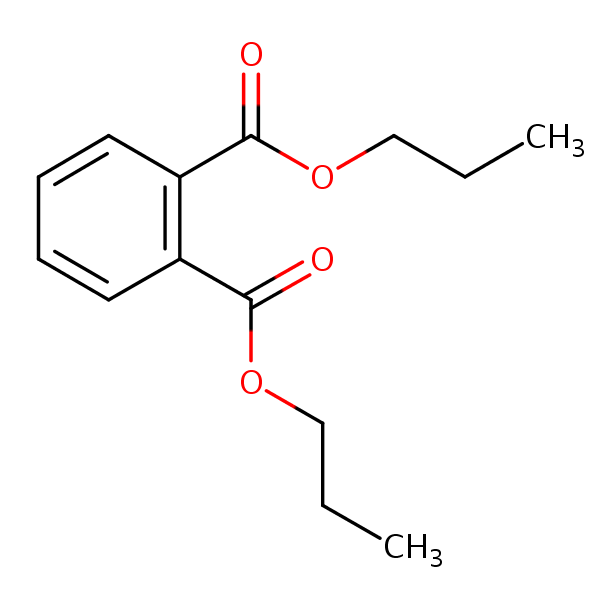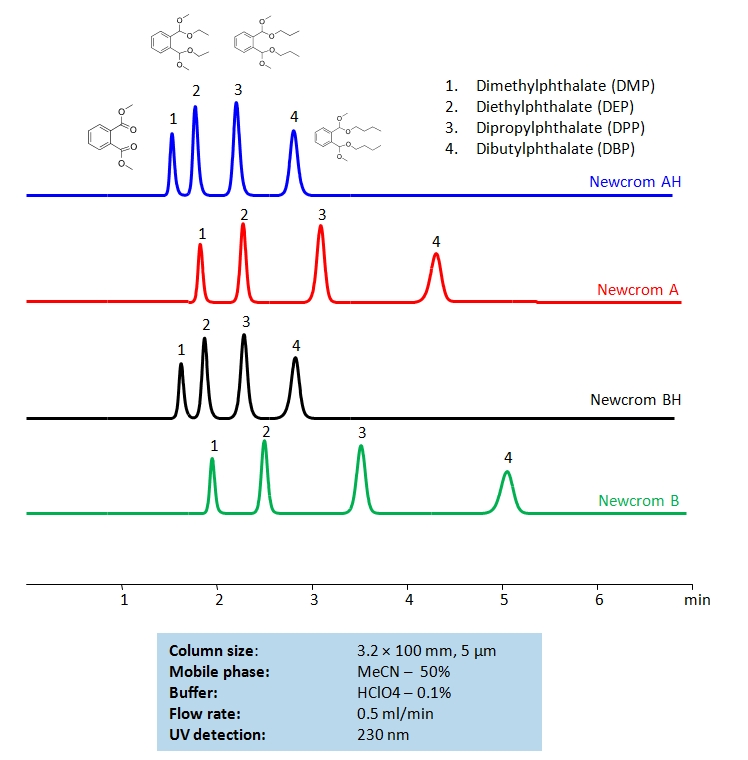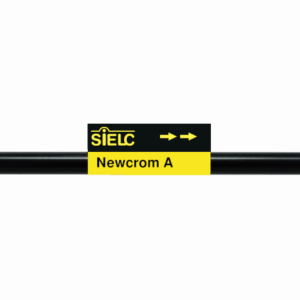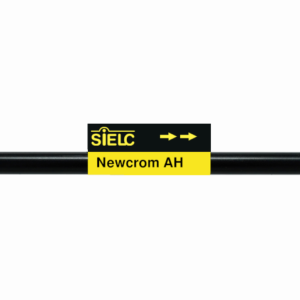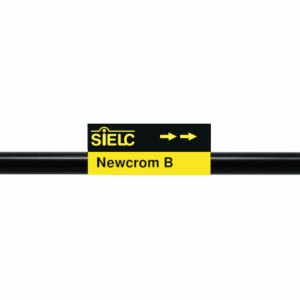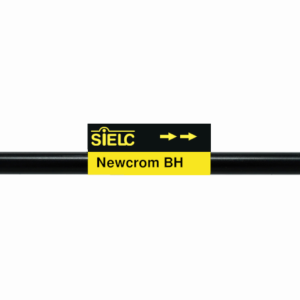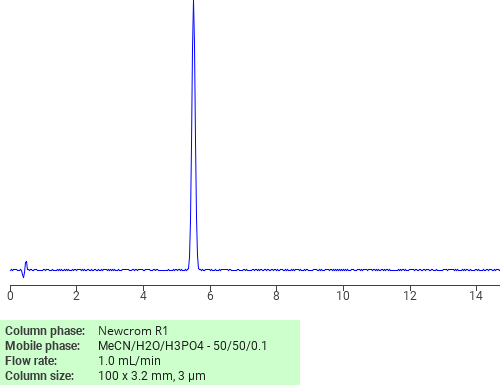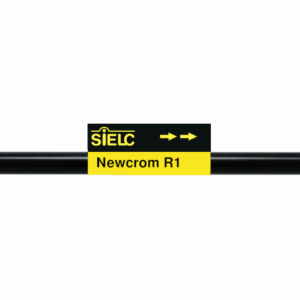| CAS Number | 131-16-8 |
|---|---|
| Molecular Formula | C14H18O4 |
| Molecular Weight | 250.295 |
| InChI Key | MQHNKCZKNAJROC-UHFFFAOYSA-N |
| LogP | 3.27 |
| Synonyms |
|
Applications:
HPLC Separation of Phthalates
November 4, 2020
HPLC Method for Diethylphthalate (DEP), Dimethylphthalate (DMP), Dipropylphthalate (DPP), Dibutylphthalate (DBP) on Newcrom A by SIELC Technologies
High Performance Liquid Chromatography (HPLC) Method for Analysis of Diethylphthalate (DEP), Dimethylphthalate (DMP), Dipropylphthalate (DPP), Dibutylphthalate (DBP).
Dimethyl Phthalate (DMP) is a phthalate ester with the chemical formula C10H10O4. It has a vide variety of uses from being an ingredient in insect repellent to being a part of safety glass and goggles. While it may appear similar to water, it is only soluble in organic solvents and not water. DMP is an irritant to eyes, nose, and throat through inhalation.
Diethyl Phthalate (DEP) is a phthalate ester with the chemical formula C10H10O4. It is used as a solvent in perfumes, lotions, and creams. In medicine, it is used as an inactive ingredient for purposes of slowing down the release of active ingredients.
Dipropyl Phthalate (DPP) is a phthalate with the chemical formula C14H18O4. It is used to increase the durability elasticity of plastics while also being a solvent for certain chemical applications. While it’s toxicity is low, it can still be dangerous, considering the risks of phthalates.
Dibutyl Phthalate (DBP) is a phthalate with the chemical formula C16H22O4. It is used to increase the durability elasticity of plastics, as well as an ingredient in glues. DBP is an endocrine disruptor, which means that it effects hormone production.
Diethylphthalate (DEP), Dimethylphthalate (DMP), Dipropylphthalate (DPP), Dibutylphthalate (DBP) can be retained and analyzed using the Newcrom A stationary phase column. The analysis utilizes an isocratic method with a simple mobile phase consisting of water and acetonitrile (MeCN) with a perchloric acid buffer. Detection is performed using UV.
| Column | 3.2×100 mm, 5 µm, 100A |
| Mobile Phase | MeCN/H2O – 50/50% |
| Buffer | HClO4 – 0.1% |
| Flow Rate | 0.5 ml/min |
| Detection | UV, 230 nm |
| Class of Compounds |
Phthalates, Hydrophobic |
| Analyzing Compounds | Diethylphthalate (DEP), Dimethylphthalate (DMP), Dipropylphthalate (DPP), Dibutylphthalate (DBP) |
Application Column
Newcrom A
The Newcrom columns are a family of reverse-phase-based columns. Newcrom A, AH, B, and BH are all mixed-mode columns with either positive or negative ion-pairing groups attached to either short (25 Å) or long (100 Å) ligand chains. Newcrom R1 is a special reverse-phase column with low silanol activity.
Select optionsNewcrom AH
The Newcrom columns are a family of reverse-phase-based columns. Newcrom A, AH, B, and BH are all mixed-mode columns with either positive or negative ion-pairing groups attached to either short (25 Å) or long (100 Å) ligand chains. Newcrom R1 is a special reverse-phase column with low silanol activity.
Select optionsNewcrom B
The Newcrom columns are a family of reverse-phase-based columns. Newcrom A, AH, B, and BH are all mixed-mode columns with either positive or negative ion-pairing groups attached to either short (25 Å) or long (100 Å) ligand chains. Newcrom R1 is a special reverse-phase column with low silanol activity.
Select optionsNewcrom BH
The Newcrom columns are a family of reverse-phase-based columns. Newcrom A, AH, B, and BH are all mixed-mode columns with either positive or negative ion-pairing groups attached to either short (25 Å) or long (100 Å) ligand chains. Newcrom R1 is a special reverse-phase column with low silanol activity.
Select optionsDiethylphthalate (DEP)
Dimethylphthalate (DMP)
Dipropylphthalate (DPP)

Separation of Dipropyl phthalate on Newcrom R1 HPLC column
February 16, 2018
Dipropyl phthalate can be analyzed by this reverse phase (RP) HPLC method with simple conditions. The mobile phase contains an acetonitrile (MeCN), water, and phosphoric acid. For Mass-Spec (MS) compatible applications the phosphoric acid needs to be replaced with formic acid. Smaller 3 µm particles columns available for fast UPLC applications. This liquid chromatography method is scalable and can be used for isolation impurities in preparative separation. It also suitable for pharmacokinetics.
Application Column
Newcrom R1
The Newcrom columns are a family of reverse-phase-based columns. Newcrom A, AH, B, and BH are all mixed-mode columns with either positive or negative ion-pairing groups attached to either short (25 Å) or long (100 Å) ligand chains. Newcrom R1 is a special reverse-phase column with low silanol activity.
Select options